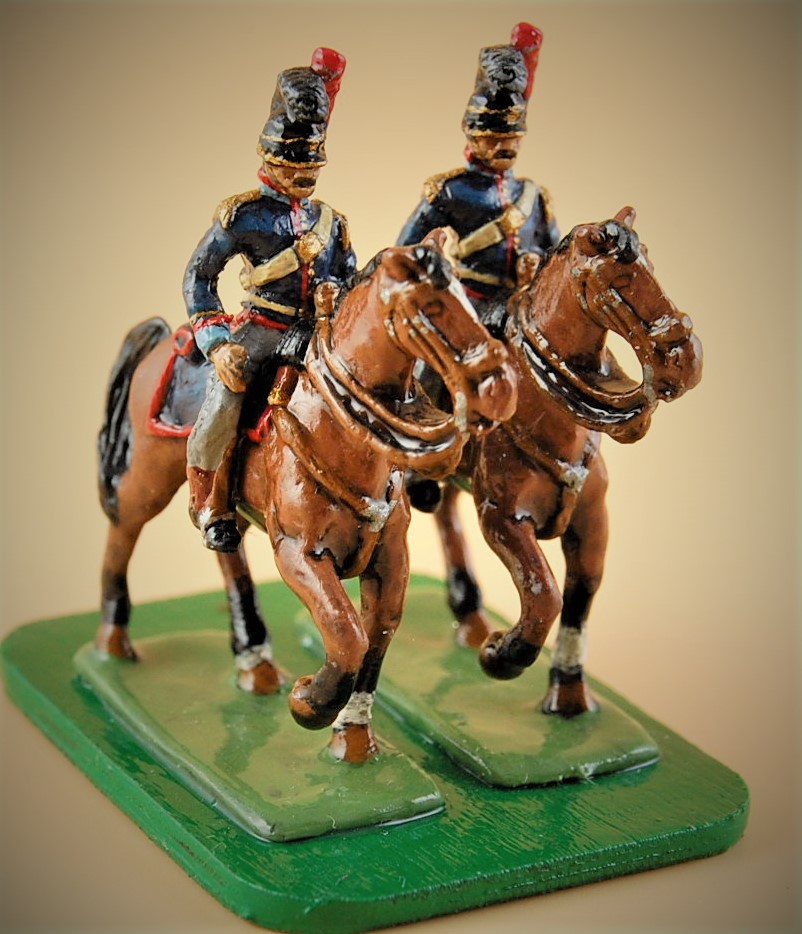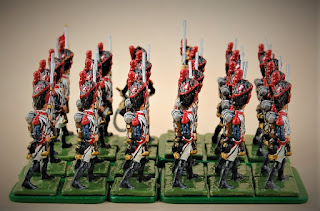The Bavarians needed a little skirmish support now that they have artillery, infantry and cavalry, so to the rescue comes the Bavarian 5th light Infantry. Knotel has a fabulous illustration of the 5th, which went a long way to helping me prioritize this unit, not to mention the small number of figures required! The figures are primarily Der Kriegspieler, (2xDK 175, 5xDK 174 with plume added), though the officer is Hinton Hunt (BVN 6) and the trumpeter a converted Hinton Hunt/Dave Clayton figure from BVN 7?.
 |
Skirmish order
|
Recently I was able to host a game to celebrate my birthday. The game was an excuse to ply good friends with food and wine, and also to get all of my toys on the battlefield. The British may a good effort to hold their own, but in truth the deck was a bit stacked against them and the French were able to gain the advantage on both flanks, rendering the center untenable. Some nice pictures of the game can be found here thanks to David R. and his excellent camera work:
https://www.smugmug.com/gallery/n-hz8WwP/
 |
The crew minus David R., our illustrious photographer. Could not have spent the day with a better group of folks. I only wish I had gotten a picture of Beans, the goofy pup who came to visit, smooshing his head against the back door. I guess he wanted some ham too!
|
 |
The real impetus for the celebration was a giant Serrano ham accompanied by Spanish tapas - We are still working through the leftovers!
|
Lastly a small teaser for my next post - the 7th Chevau-Legere / Vistula Lancers




















































